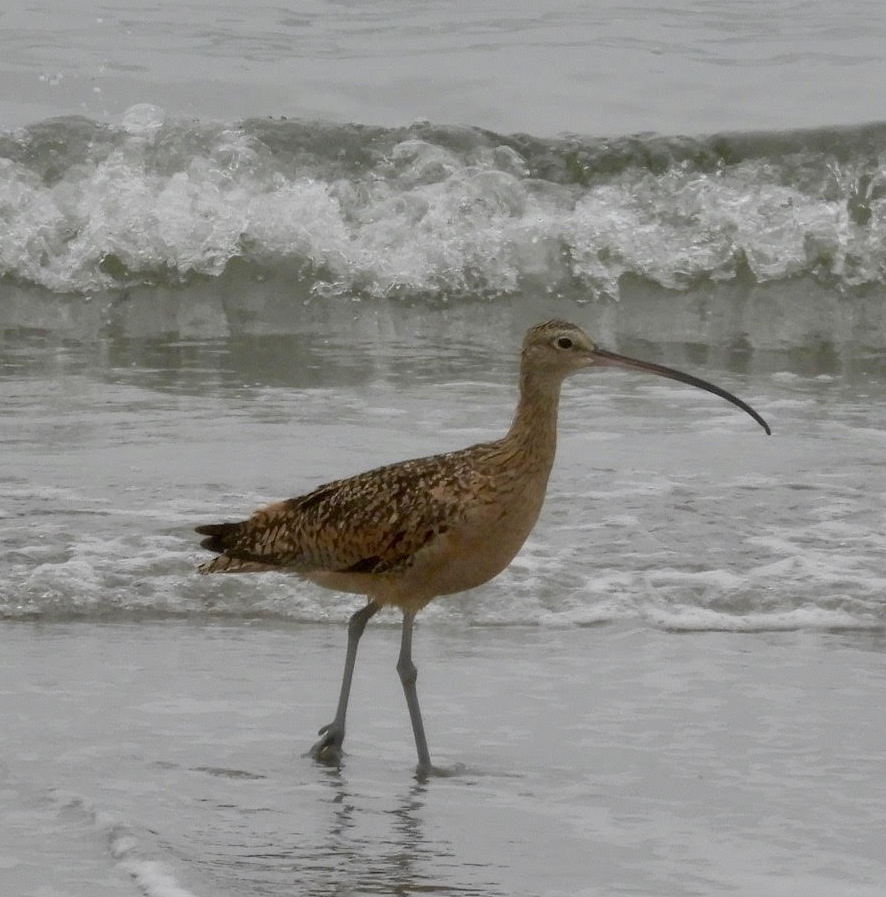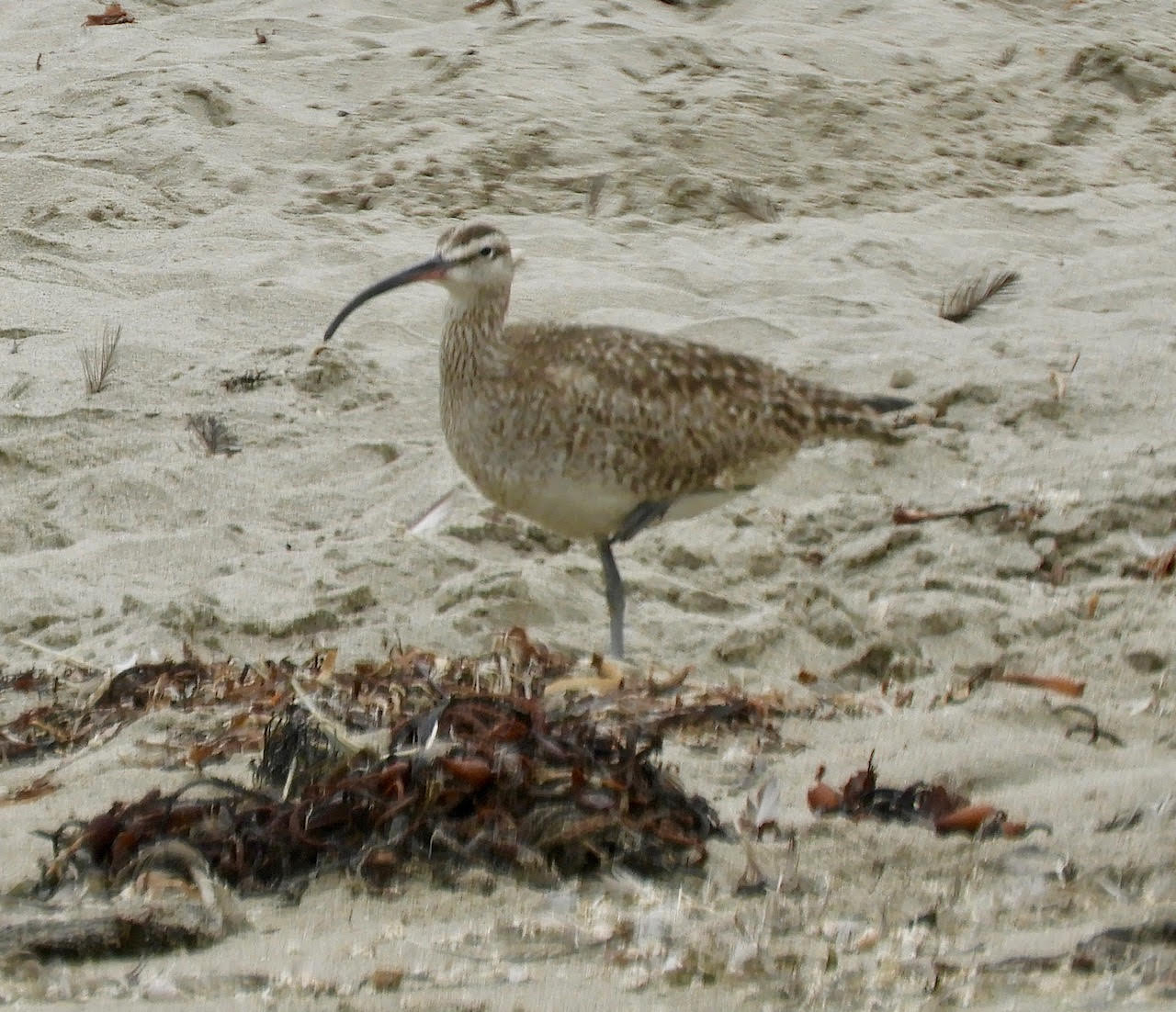Bird from Bird: telling shorebirds apart
Willets, Whimbrels, Godwits, and Curlews, oh my!
First off, if you love beaches and shorebirds but don’t feel a need to know their names, feel free to move along, soak up the sun, and enjoy the salt air.
Some of us, however, learn the identity of one bird, which leads to another and another, until we’re anticipating the arrival of the migratory birds, each in its own time, and monitoring the health of the local residents.
Visitors to California’s Central Coast, and particularly to my home at Pájaro Dunes (pájaro means bird in Spanish), have a wealth of birds to observe, but may have trouble telling them apart. Here’s a primer for four similar species you’re apt to spot at the water’s edge in the waning days of the summer season. I’ve included their height, but that’s a useful comparison only if the birds are standing near one another.
Long-billed Curlews Numenius americanus 23”
These birds are easy to identify by their exceptionally long downward-curled beak. (If I were a Curlew, I’d spend most of my time performing unplanned flips, or lying on my back wondering what happened.) They’re also the tallest and longest-legged shorebird on the coast.
Marbled Godwits Limosa fedoa 18”
Marbled Godwits are smaller and shorter than the Curlews, with darker legs and shorter bills. While they resemble juvenile curlews, their two-toned bills turn up “toward God.” They are apt to appear in larger groups than Long-billed Curlews.
Whimbrels Numenius phaeopus 17 1/2”
While related to Long-billed Curlews, Whimbrels are seen in larger numbers. The stripes on their head are much bolder than on the Long-billed Curlews and they have a dark eyeline. Their legs are shorter and their bills are less ungainly.
Willets Tringa semiplamata 15”
Willets have shorter stouter bills and are more charcoal and white than the sandy red and buff colors of the other shorebirds.
Enjoy the birds!







